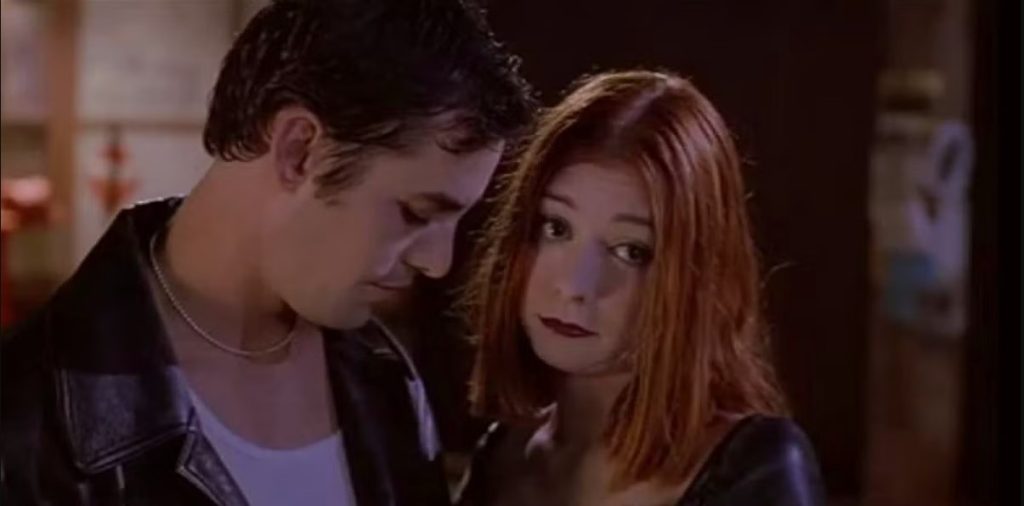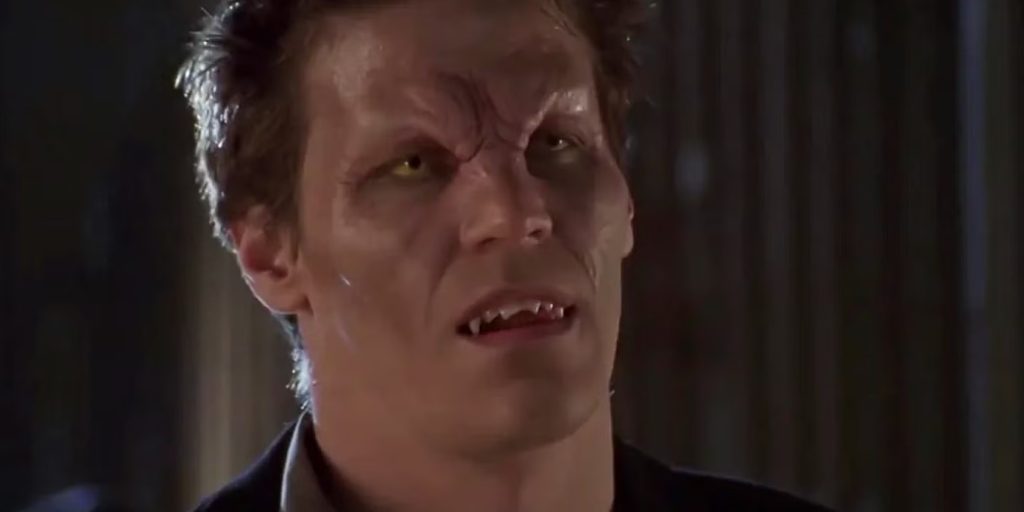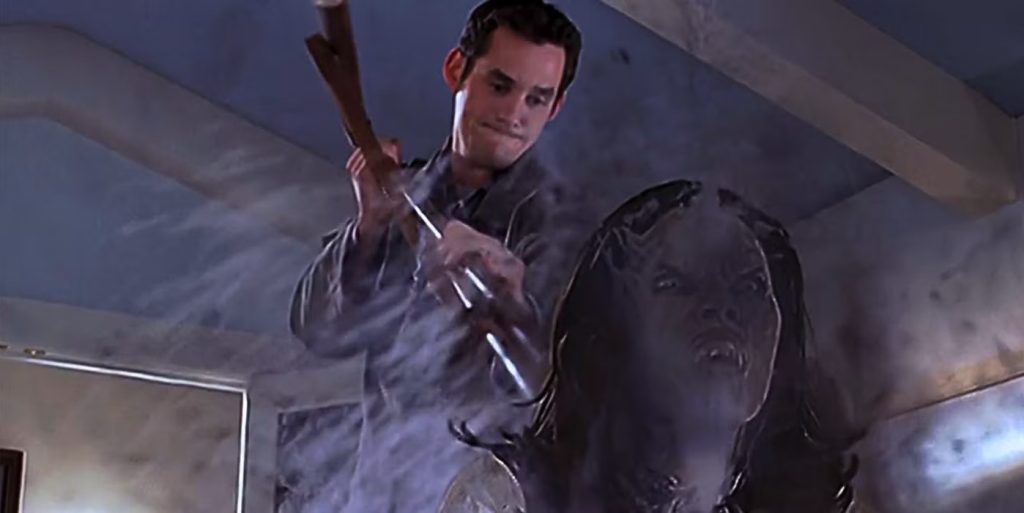
Buffy the Vampire Slayer and Its Spin-Off Both Sent Mixed Signals About This Main Character’s Backstory
From the very first episode of the series, Buffy the Vampire Slayer was careful to establish the lore and rules regarding their particular brand of blood-sucking fiends. A considerable amount of exposition is devoted to having Buffy and Giles discuss the nature of vampires, how they’re made, their strengths and weaknessess, and how to slay them. This same lore was carried over to Angel after the vampire with a soul departed the original series after Season 3. Despite all this work, however, it sometimes felt that characters seemed to forget aspects of the lore when it came to Angel and his backstory.
The defining element of Angel was that he was both a vampire and a human. Fully undead in his nature but still possessing a human soul, he was faced with trying to feed or restrain his needs as a vampire without losing his humanity. The cure that threatened to take his soul back if he ever experienced a “moment of true happiness” further complicated his unlife and made him a tragic hero. Frustratingly, sometimes even Angel seemed to forget exactly how vampires work and what it meant for him.
Vampires in Buffy and Angel Aren’t Actually People
- Creator Joss Whedon originally intended for vampires in Buffy the Vampire Slayer to be metaphors for the various challenges of growing up.
- Buffy the Vampire Slayer‘s lore did incorporate many classic tropes from vampire fiction.
- Notably, the idea that vampires can’t enter a home unless invited recurring element of many plots on the show.
The most important aspect of the lore in Buffy the Vampire Slayer and Angel is that vampires are not real people. This can be confusing for viewers who only casually watch the show or miss one or two early episodes, as it certainly seems like the opposite is true. Vampires look like the people they were before and often have similar personalities. They clearly possess all the memories of the person they used to be and even seem to have the same grudges. They even tend to answer to the same name they did in life, with Angel and Spike being notable exceptions. None of this, however, means that a vampire is anythiny but a demon in a human costume.
In Buffy and Angel, when someone is turned into a vampire, a process that requires them being drained of blood and then drinking vampire blood, they simply die. Their soul departs their body and leaves the mortal world. In its place, a demon takes up residence in the fresh corpse, becoming a vampire. Inhabiting this new body, the demon has access to all of its memories and even takes on aspects of the deceased’s behaviour and mannerisms. Despite appearances, however, it is a brand-new being and wholly evil.
Much of this lore is established in the first episode of Buffy the Vampire Slayer, when Giles explicitly tells Xander that his friend Jesse, who has just been turned, is truly dead and that his vampire is, in fact, “the thing that killed him.” Buffy later restates this information to her former friend, Ford, when he seeks to become a vampire will not save him, it will simply be another way to die. While the Scooby gang often refers to vampires by their old names and even talks about them as if they’re the same person, it’s clear that they all know what the undead truly are.
While this is all plainly explained early and repeatedly in the Buffy and again in Angel, when it comes to the vampire with a soul, the rules sometimes feel like they’re being bent. While Angel does regularly note that there’s a demon inside of him, reiterating the core piece of the lore, he often expresses guilt for things that, by the established rules, he wasn’t responsible for. Further, other characters act as if this is appropriate.
Angel Carries Guilty for Things He Didn’t Do

- Angel’s birth name was Liam, but he took the name Angelus after become a vampire.
- During his time before getting his soul back, Angelus was known as “the one with the angelic face.”
- Angel first became a vampire in Ireland in 1753.
Throughout Buffy the Vampire Slayer and its later spin-off, Angel constantly expresses guilt for the horrible things he did as a vampire. In Season 1 of Buffy, he talks about killing his family and spending decades killing without remorse. In “Amends,” he is nearly driven to take his own life by the First Evil’s reminding him of his actions and showing him visions of the harm he caused. Of course, guilt, angst, brooding, and atonement are core aspects of his characters but, given the official lore, this doesn’t entirely make sense.
Angel knows full well that he did not truly do the things he did as a vampire. He understands how vampires work more than most and is always aware that a demon inside him performed the terrible deeds of his past. With his soul returning to his body, he may remember the things the demon did when he was gone, and he may even feel, in some way, as if he did them. Logically, however, he should know that he was in no way responsible.
It’s understandable that Angel might instinctively or subconsciously feel guilty as he does remember his vampire past. It also makes sense that he would want to make up for the past and do some good in the world, even if he wasn’t actually responsible for the bad he did. Still, it’s frustrating that he rarely acknowledges that Angelus is not actually him and the demon’s actions are not his own. Further, other characters, even those close to him, rarely try to comfort him by reminding him of these facts.
In Season 3 of Buffy the Vampire Slayer, Giles plainly holds Angel responsible for killing Jenny Calendar during the previous season when he’d lost his soul again. Xander also takes every opportunity to remind Angel that he’s a vampire and murdered many innocent people over the years. In defending Angel, even Buffy, and later Cordelia and Wesley tend to suggest that Angel is good now, rather than emphasizing that he was never evil, he is simply himself again. It’s rare for anyone in either show to remind Angel and the fans, that the man was dead and gone for decades, and had nothing to do with the demon’s crimes. Further, no one ever seems to wonder what the human soul was doing while the demon was in charge.
Buffy’s Afterlife Experience Raises Questions About Angel

- It’s established in Buffy the Vampire Slayer and Angel that there are numerous alternate dimensions.
- Some dimensions in Buffy and Angel are meant to represent different versions of Heaven and Hell.
- Both Buffy and Angel have spent time in these dimensions while dead.
In Buffy the Vampire Slayer and Angel, it’s revealed that the afterlife exists in many different forms. Angel is sent to a Hell dimension at the end of the second season of Buffy and his son is taken to a different dimension in Angel. In Season 6 of Buffy, it’s revealed that the Slayer had gone to Heaven after giving her life to save the world the previous year. Thus, fans can be certain that the soul exists and, upon death, it departs the mortal world and travels someplace else. This raises questions about Angel.
After his soul is restored, Angel remembers the actions the demon took as a vampire but never claims to have any memories of where his soul went. He never speaks of being in Heaven or Hell. When his soul is restored by Willow, before Buffy kills him, he says he feels like he just woke up, indicating that he doesn’t remember anything that happened to him while he was gone. If the afterlife is real, it begs the question of where Angel’s soul was when it departed his body.
For fans of the heroic and brooding vampire, it can be frustrating to have these questions unanswered and truths so often unsaid. Angel often carries incredible guilt for things he didn’t truly do, and his friends never offer him comfort by reminding him of this fact. His lack of memories about the afterlife also leaves fans wondering just where he’s destined to go when he eventually dies for good. Surely, he’s saved the world nearly as much as his ex and deserves his own place in Heaven, but neither show has ever offered any real hope.
Original article at CBR.
This article has been reproduced for archive purposes, all rights remain.








